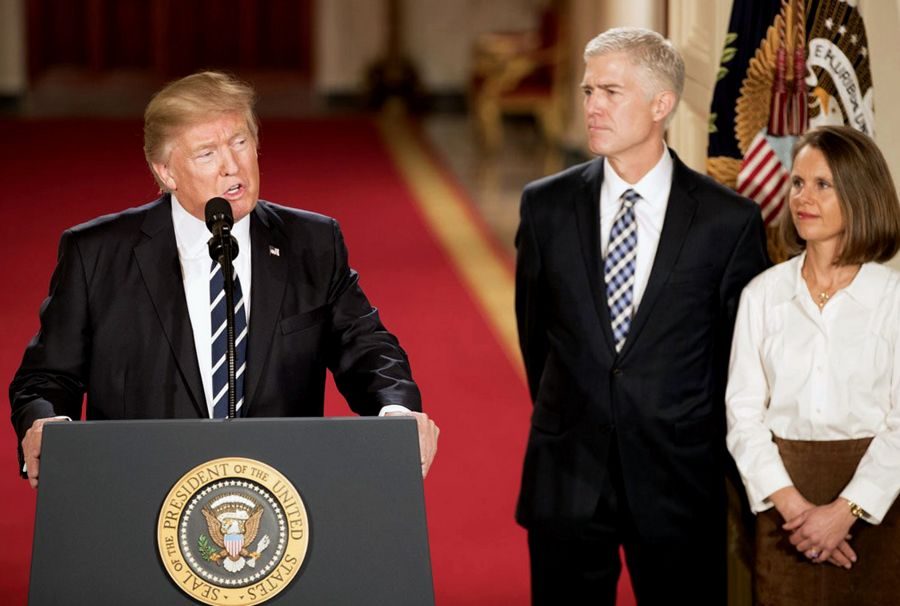SCOTUS Fight: Gorsuch Takes the Stand
April 11, 2017
This last week, the fight over the future of the Senate came to a close with the confirmation of justice Neil Gorsuch.
Shortly after his inauguration, President Trump nominated the Colorado judge to the vacant seat on the Supreme Court. Trump picked Gorsuch out of twenty other possible nominees due to his similarity to the late Antonin Scalia. Since that day, the nomination had been sitting in committee, but on March 30th, the Senate Judiciary Committee declared the nomination would move on to a general vote on the Senate floor.
After the tabling of Obama’s nominee Merrick Garland for 293 days, Democrats announced at the beginning of the new presidency that they would block any conservative Supreme Court nomination with all their might. Gorsuch happens to be highly conservative.
“The only requirement in the Constitution for a Supreme Court justice is that they be nominated by the President and confirmed by the Senate.” said Johnathan Wright, the Bob Jones AP Government teacher. “So it boils down to a political process. Both Merrick Garland and Neil Gorsuch are both, I’m sure, qualified. It simply boils down to the political realities of how might they rule in future generations on contentious court cases like Roe v. Wade, gun control, affirmative action, etcetera.”
Republicans, having a Senate majority, invoked the “nuclear option” Thursday, changing the number of votes necessary to confirm Gorsuch and future Supreme Court nominees from 60 to 51. He was promptly confirmed Friday morning.
Mr. Wright stated, “The Democrats, a few years ago, employed [the nuclear option] for all non-Supreme Court judicial appointees, including federal district court and appellate court, because they felt as though they couldn’t get a fair hearing from Republicans. Now the shoe is on the other foot, and ironically, could potentially be Republicans invoking the nuclear option to put in Supreme Court justices. But simply due to the fact that there are so few Supreme Court justices–only nine–and they serve for life tenure, and could potentially have such a tremendous impact on the legal system, that’s where it becomes much more contentious.”
“So, there are definitely risks with this change, because it pretty much is a gateway to allowing whomever is the majority party in the senate to clear away the Supreme Court nominee previous majority party had established.” said Elisa Castaneda, president of the Bob Jones Young Democrats club. “And that is very dangerous because it allows the President to choose any potentially future Supreme Court justice without any bipartisan support, but it’s fine because we all know how supported and loved by the American people the President is, right? This change in the Senate goes against the very nature of our government […] which is purposefully made up of checks and balances.”
Gorsuch will have the opportunity to rule or to grant certiorari in 13 cases this month, pertaining to such issues as spending tax dollars on churches, religious freedom and civil rights, and guns fro self-defense outside the home. He will be sworn in privately on Monday, April 17, by current Chief Justice John Roberts.


